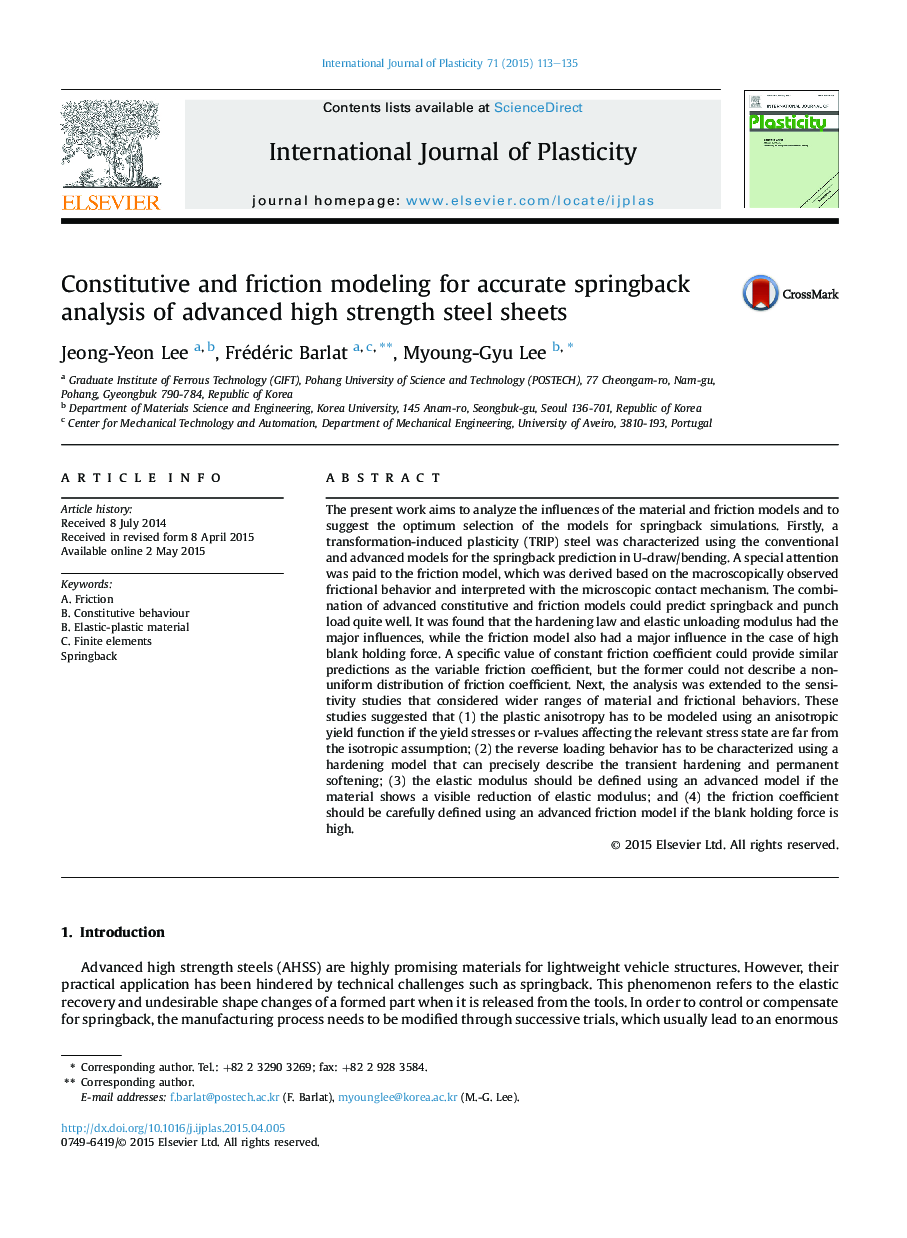| کد مقاله | کد نشریه | سال انتشار | مقاله انگلیسی | نسخه تمام متن |
|---|---|---|---|---|
| 786091 | 1465602 | 2015 | 23 صفحه PDF | دانلود رایگان |
• Friction model incorporating pressure and sliding velocity effect was newly formulated.
• New friction model was implemented by using user subroutine of FE software.
• Systematic analysis on the effect of constitutive and friction models was provided in the springback simulations.
• Guideline for the selection of advanced material and friction model was suggested for the accurate springback prediction.
The present work aims to analyze the influences of the material and friction models and to suggest the optimum selection of the models for springback simulations. Firstly, a transformation-induced plasticity (TRIP) steel was characterized using the conventional and advanced models for the springback prediction in U-draw/bending. A special attention was paid to the friction model, which was derived based on the macroscopically observed frictional behavior and interpreted with the microscopic contact mechanism. The combination of advanced constitutive and friction models could predict springback and punch load quite well. It was found that the hardening law and elastic unloading modulus had the major influences, while the friction model also had a major influence in the case of high blank holding force. A specific value of constant friction coefficient could provide similar predictions as the variable friction coefficient, but the former could not describe a non-uniform distribution of friction coefficient. Next, the analysis was extended to the sensitivity studies that considered wider ranges of material and frictional behaviors. These studies suggested that (1) the plastic anisotropy has to be modeled using an anisotropic yield function if the yield stresses or r-values affecting the relevant stress state are far from the isotropic assumption; (2) the reverse loading behavior has to be characterized using a hardening model that can precisely describe the transient hardening and permanent softening; (3) the elastic modulus should be defined using an advanced model if the material shows a visible reduction of elastic modulus; and (4) the friction coefficient should be carefully defined using an advanced friction model if the blank holding force is high.
Journal: International Journal of Plasticity - Volume 71, August 2015, Pages 113–135
